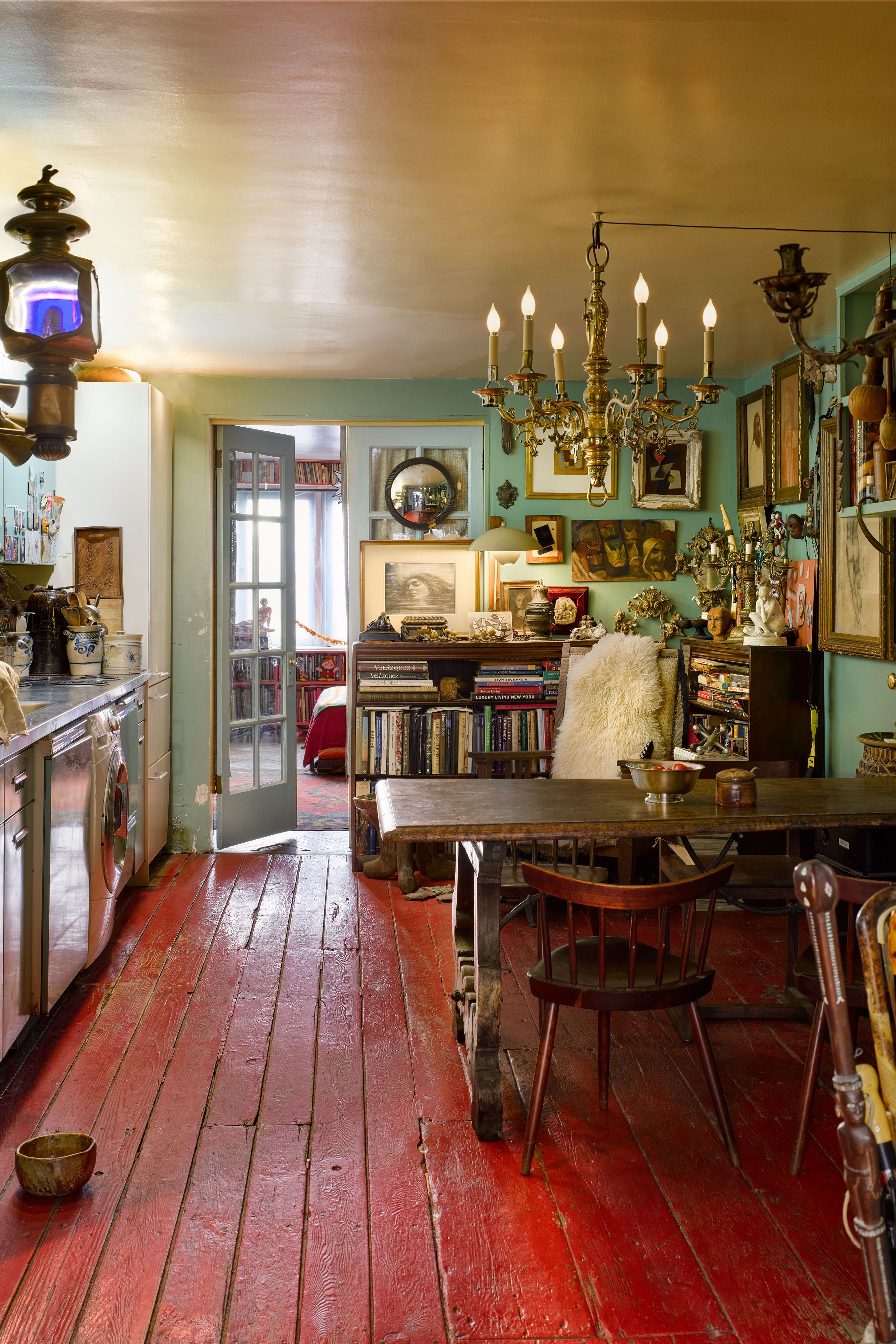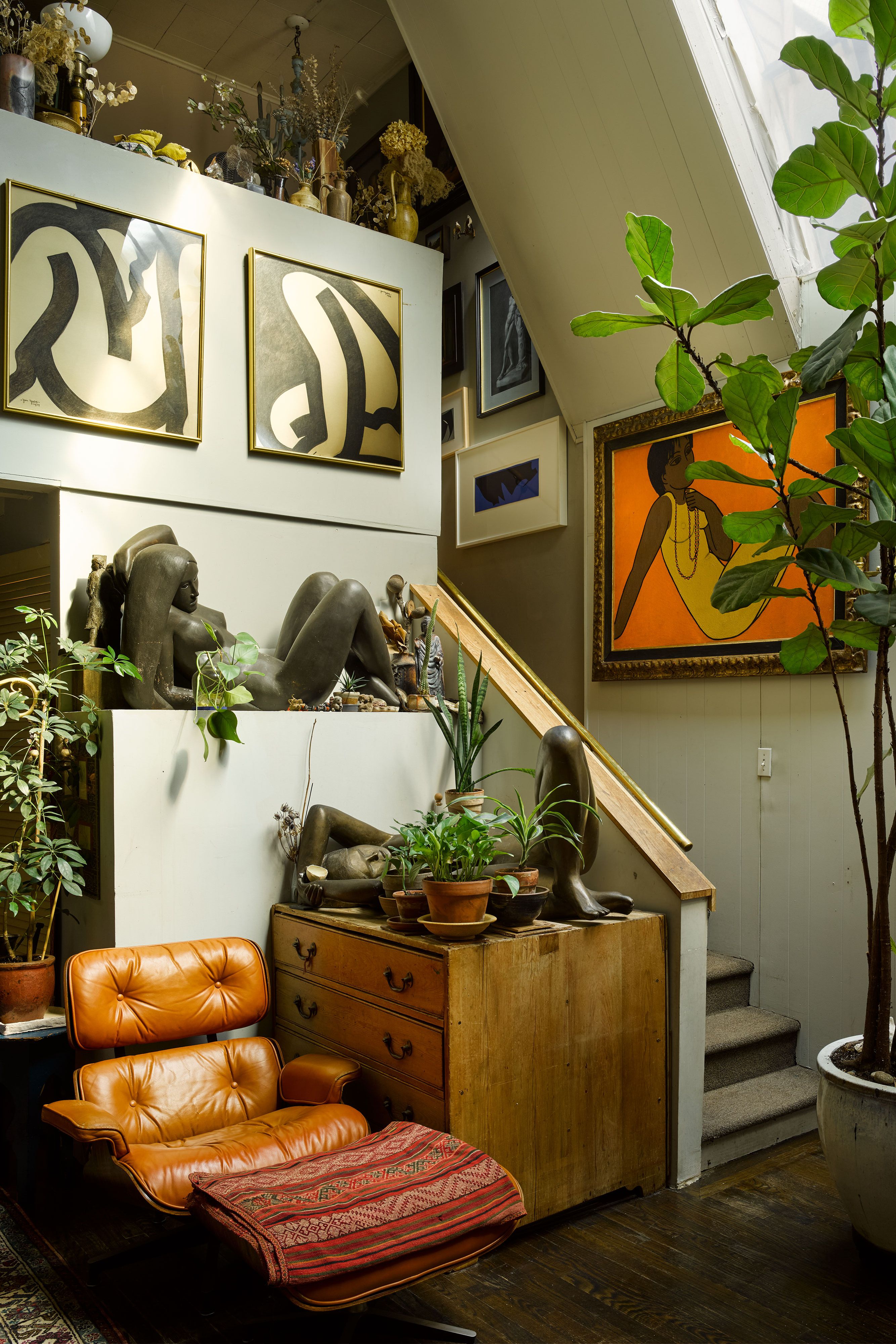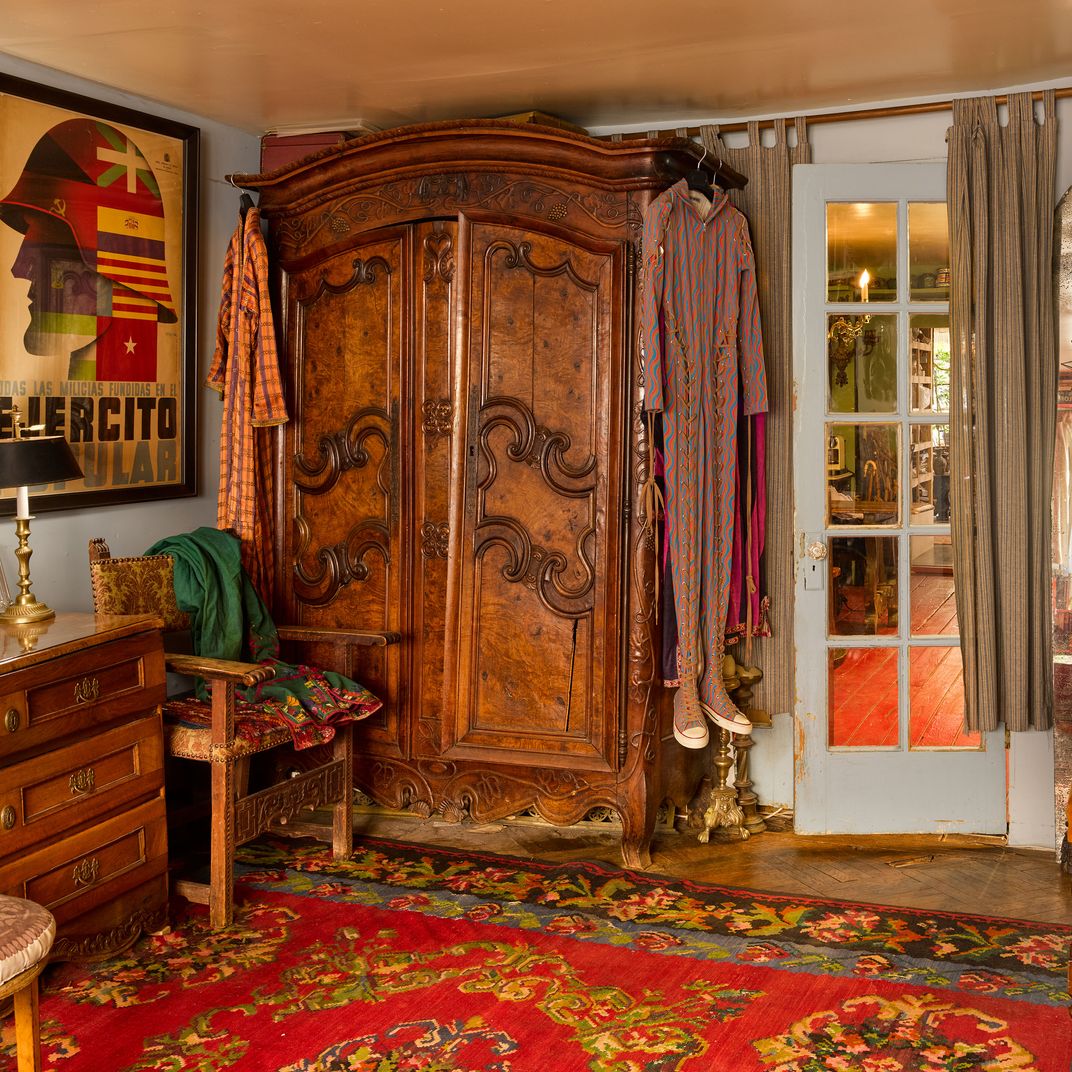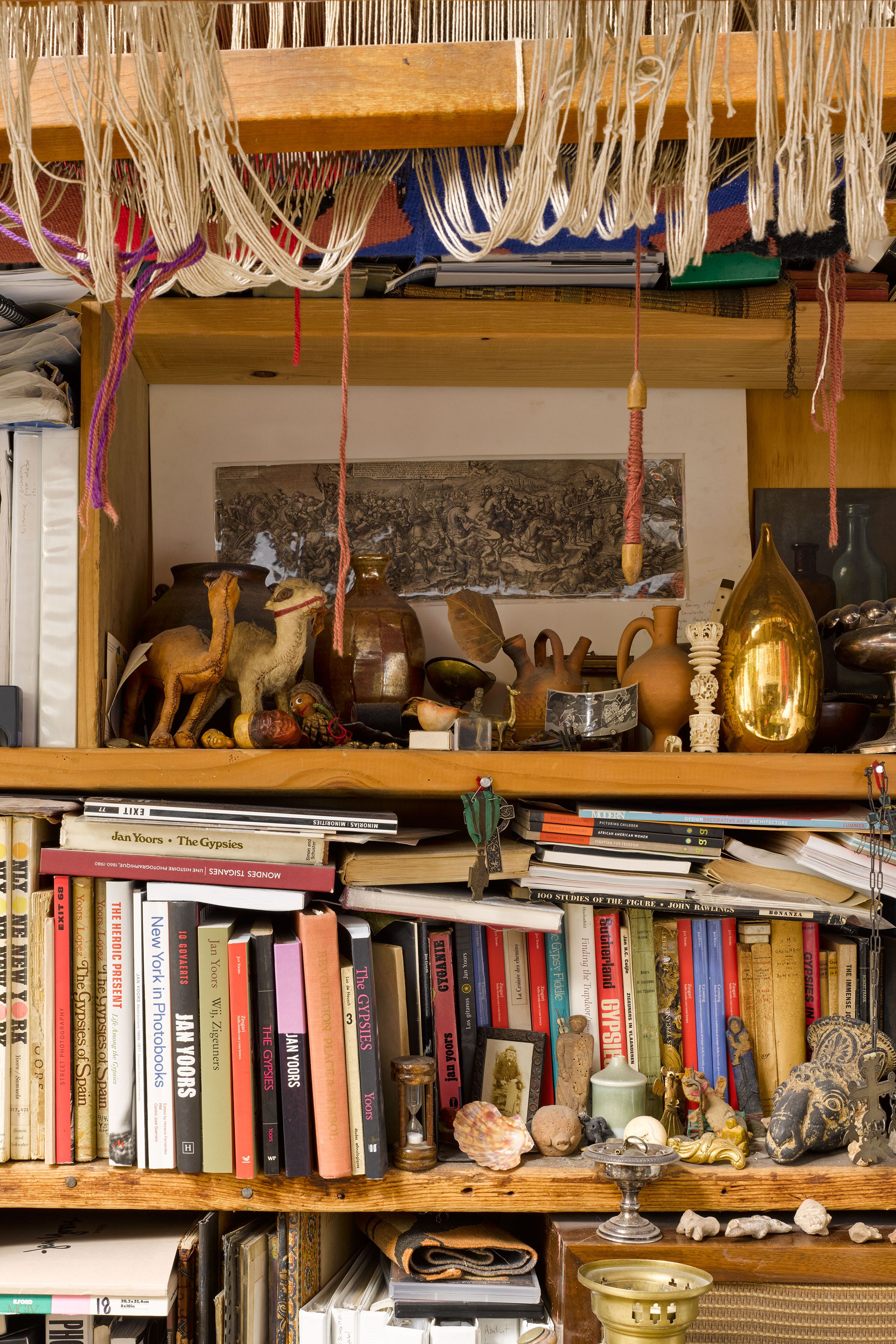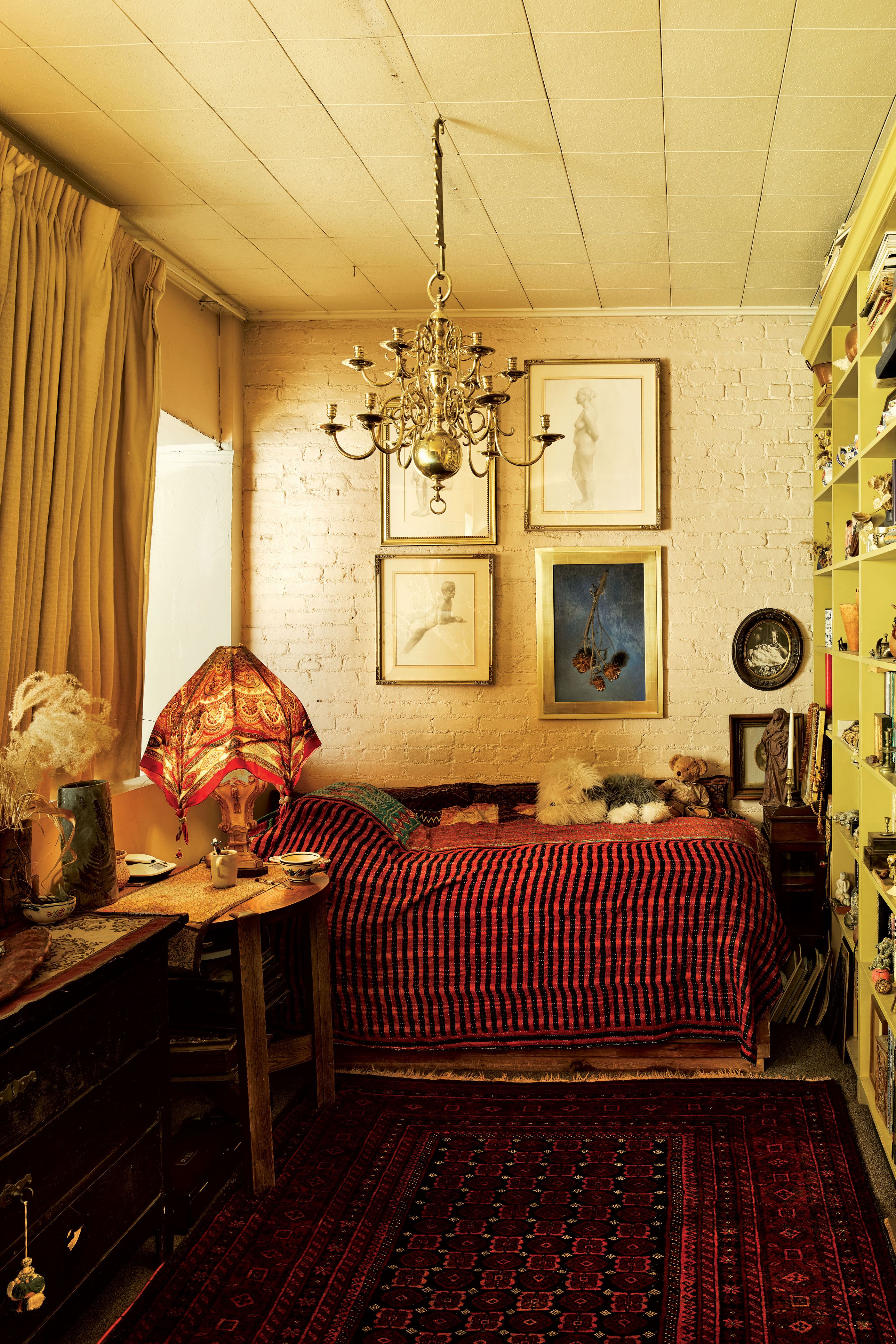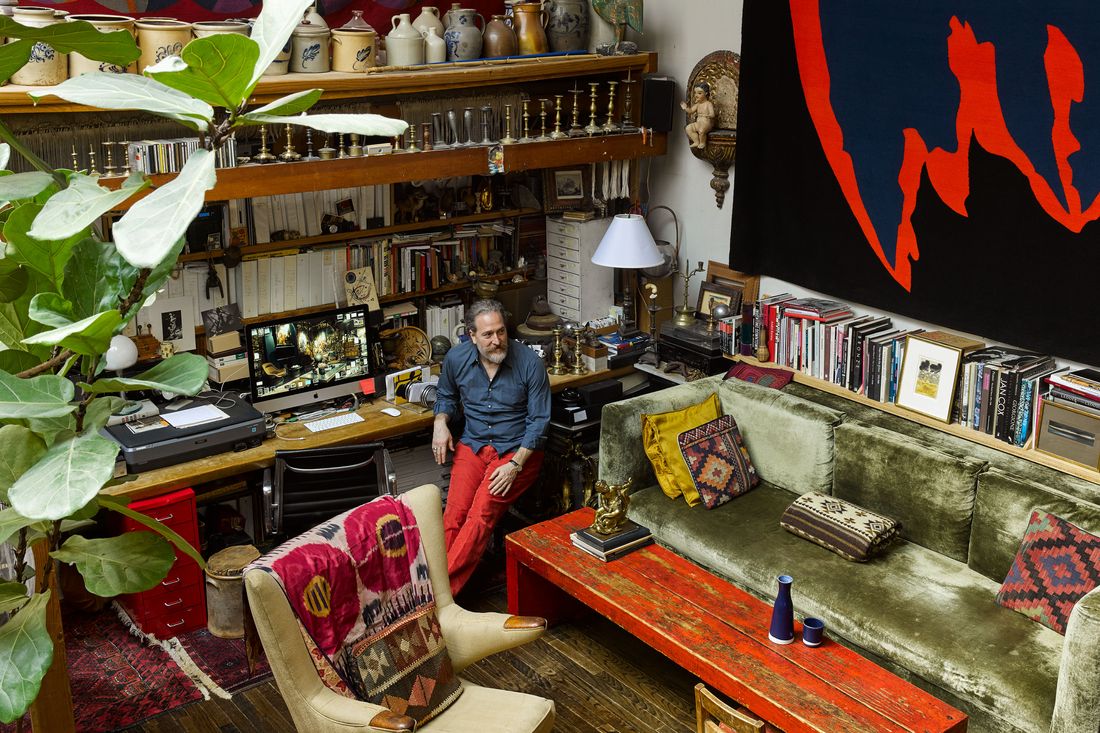
When you walk into the double-height living room of Kore Yoors’s 1,500-square-foot full-floor apartment in Greenwich Village, the legacy of his father, Jan Yoors, a Belgian American artist who died in 1977, is everywhere. Kore, an artist himself who oversees his father’s archive, lives with his father’s paintings, sculptures, books, and tapestries — even one of his textile looms. The coffee table is made from the beams of a former loom: “They just thought the wood was so beautiful,” he says of his father and the two women he collaborated with in his work and his life, one of whom is his mother. The other was the mother of his two half-siblings.
Kore spent his childhood in the Village, mostly on Waverly Place, and that loom loomed large. “The door would close, and it was just so silent; the city would be left behind,” he remembers. The one thing ever present was the sound of the weaving, “the tick-tick-tick of the loom, and I didn’t even notice it.”
It was very bohemian; Jan was what we might today call polyamorous. He had children with two women who were best friends, and they all lived together as a family. Kore has lived in his current apartment with his wife, Amy June Ferguson-Yoors, and his mother, Marianne Citroen-Yoors, since 2000; his “other mother,” Annabert, lived with them until she went into a nursing home in 2005 (she died in 2010).
His father Jan’s childhood and early life read like a John le Carré novel. He was born in Antwerp in 1922 to Eugeen Yoors, a stained-glass artist, and his wife, Magda Peeters, a human-rights activist. He studied sculpture at the Royal Academy of Fine Arts in Antwerp and worked with the Resistance during the war, which landed him in La Santé Prison in Paris and then a concentration camp in Spain.
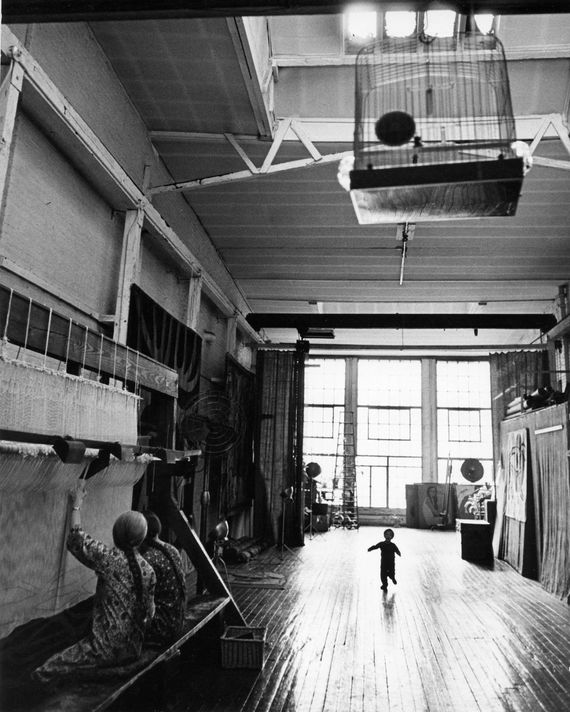
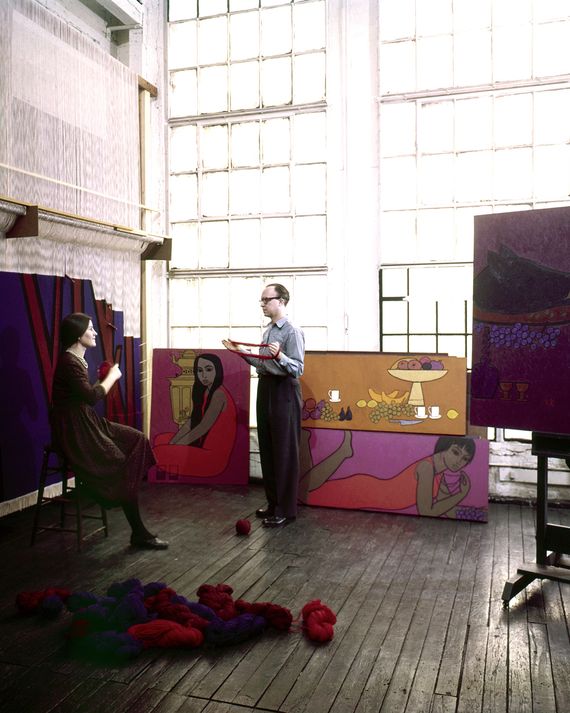
After the war, Jan married Annabert van Wettum, who grew up in the Hague on the same street as Marianne. They moved to London, where they saw an exhibition of French tapestries that inspired them to learn to weave and make their own looms. In 1947, Marianne joined them and also learned how to weave. Jan showed at Archer Gallery in London and Hugo Gallery in New York, where he moved in 1950 as a journalist. He ended up both taking photos and making tapestries.
Both women arrived in 1951. Jan and Annabert had two children together — Vanya and Lyuba — then he and Marianne had Kore. They all lived as a family at 108 Waverly Place beginning in 1967. After Jan’s death, his survivors remained at 108 Waverly until 2000. That year, both mothers and Kore and his wife moved to this garden-level place. The building was owned by a family of scientists and academics, Kore says. Its hallway was too narrow for the furniture and the loom to fit through, so he converted the window bars into a gate. “The loom was disassembled, though the two main rollers still took six people to carry.” He also put in a wood floor atop the original cement in the living room, an addition that had been built over a onetime garden, and pulled up the linoleum kitchen floor to reveal the original wood subfloor, which he painted red.
“This was when I really started archiving,” says Kore. That meant going through 10,000 pages of journals and correspondence as well as contact sheets, negatives, and prints of his father’s photography of Romani families from Europe, Hasidic communities in New York, and street life in Harlem and Chinatown. Jan had also covered the civil-rights struggle.
“I knew most of the stories by the time he died,” Yoors says of his father. “He used to always get up for a late-night snack; he’d have a banana; as a kid I always wanted to wake up and have a snack with him. So one night I tied a string to the banana and to my finger, but I slept through the night because he had untied it. I was crestfallen.”
The Kitchen: Kore painted the kitchen floor red when his family moved in. “The kitchen artworks are a mix,” he says, “but mostly by my grandfather and items from his studio in Antwerp. The police-brigade lantern on the wall on the left was thrown out from the Coach House when Babbo moved in.”
The Staircase: The stairs in the living room lead to Marianne’s bedroom. The painting of the figure with the orange background is by Jan, as are the two large bronze nudes and figure paintings above.”
The Armoire: An Issey Miyake bodysuit hangs off the armoire in his and his wife’s bedroom. Kore’s wife “loves fashion, but she doesn’t like to wear it,” he notes. The armoire was a gift from the owners of the restaurant Chanterelle, who were neighbors on Waverly. “They offered it to me.”
The Living-Room Loom: A detail with pieces of two unfinished tapestries. “It took six to nine months to complete the large works,” Kore says. He still has around 45 tapestries in the family storage archive.
Marianne’s Bedroom: Kore’s artwork is on the wall above the bed. “My mom and I both have a bug to collect,” he says.
The Kitchen: Kore painted the kitchen floor red when his family moved in. “The kitchen artworks are a mix,” he says, “but mostly by my grandfather and items from his studio in Antwerp. The police-brigade lantern on the wall on the left was thrown out from the Coach House when Babbo moved in.”
The Staircase: The stairs in the living room lead to Marianne’s bedroom. The painting of the figure with the orange background is by Jan, as are the two large bronze nudes and figure paintings above.”
The Armoire: An Issey Miyake bodysuit hangs off the armoire in his and his wife’s bedroom. Kore’s wife “loves fashion, but she doesn’t like to wear it,” he notes. The armoire was a gift from the owners of the restaurant Chanterelle, who were neighbors on Waverly. “They offered it to me.”
The Living-Room Loom: A detail with pieces of two unfinished tapestries. “It took six to nine months to complete the large works,” Kore says. He still has around 45 tapestries in the family storage archive.
Marianne’s Bedroom: Kore’s artwork is on the wall above the bed. “My mom and I both have a bug to collect,” he says.
More Great Rooms
- The Selby’s New Book About Creatives With Kids at Home
- ‘If I Had to Leave This Place, I Would Probably Leave New York’
- I’ll Never Forget the Apartment Gaetano Pesce Did for Ruth Shuman




